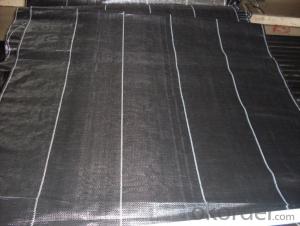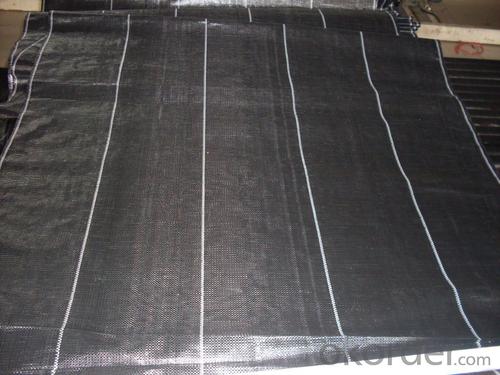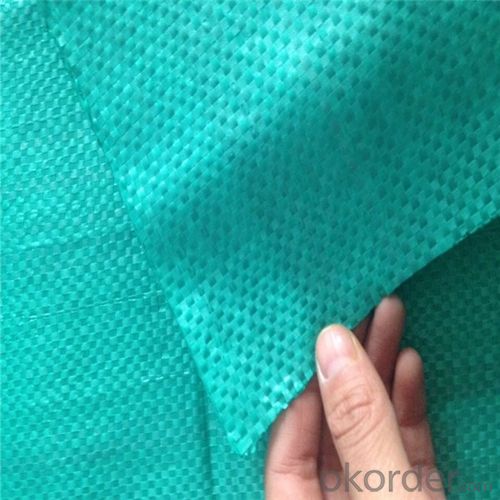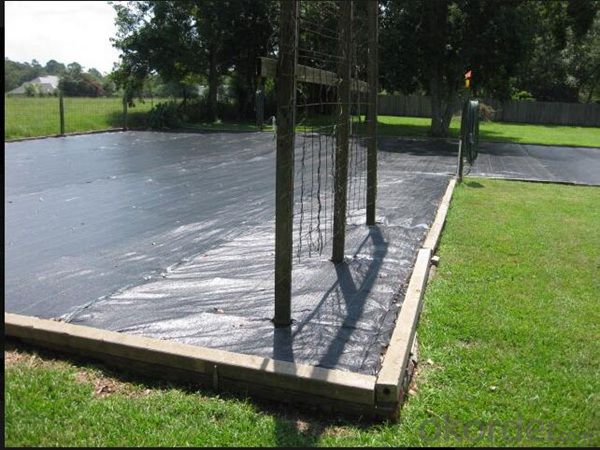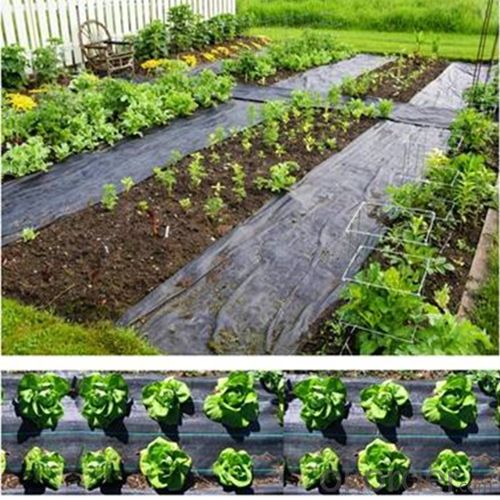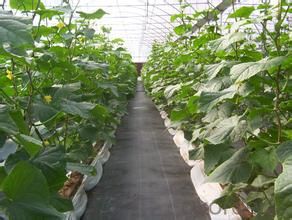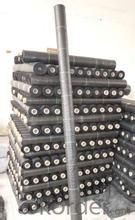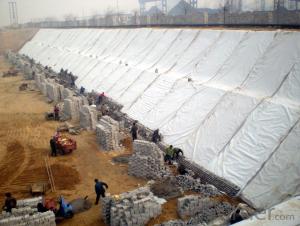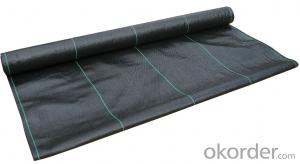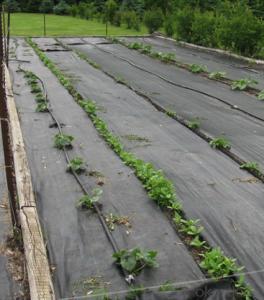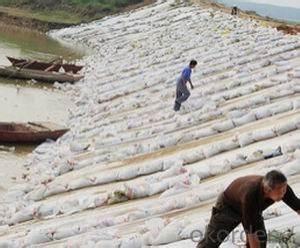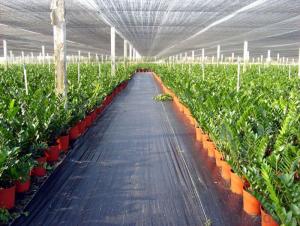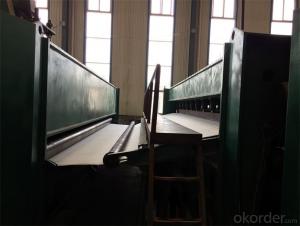Mirafi 600x Geotextile - Weed Barrier Fabric or Polypropylene Woven Fabric Made in China
- Loading Port:
- China main port
- Payment Terms:
- TT or LC
- Min Order Qty:
- 5000 roll
- Supply Capability:
- 100000 roll/month
OKorder Service Pledge
OKorder Financial Service
You Might Also Like
1. Silt Fence Introduction
Silt fence fabric is made of environmentally friendly raw materials, pp spunbond nonwoven fabric. It used to prevent the growth of weed,
without the use of potentially dangerous chemical sprays or labor intensive hoeing. Once installed, weed mat will continue providing
protection for years without maintenance.
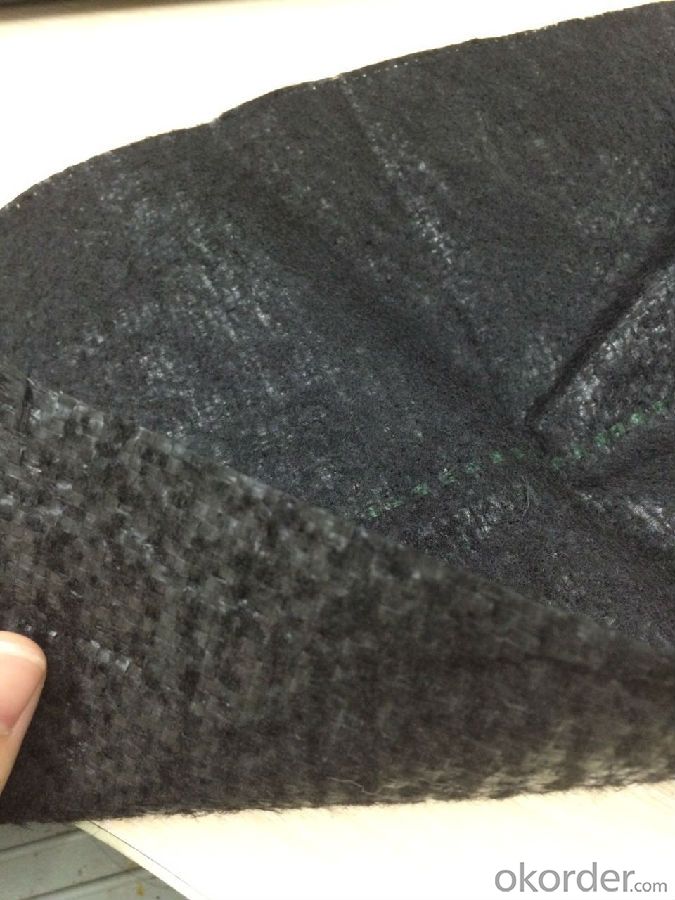
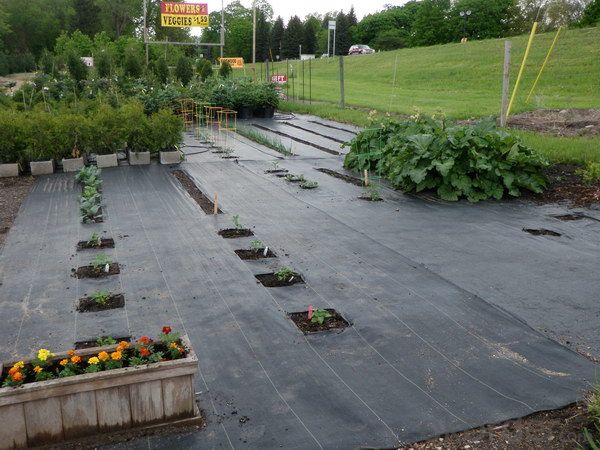

2. Silt Fence Fabric Feature:
1. Weed suppressant and drainage control landscaping fabric
2. Spun bonded non-woven fabric – will not fray when cut
3. Easy to use
4. Environmentally friendly
5. Allows water, air and nutrients through, suppressing weeds without the use of chemicals
6. Good alternative to Plantex® where cost is a factor
7. UV Stabilised
8. Reduces the level of watering required due to the slower rate of water evaporation
3. Silt Fence Fabric Function:
1. Cover crops in the ground surface,prevent weeds and against the insect
2. Controlling soil humidity and the temperature
3. Does not affect the growth of the crops
4. Protects plants from harmfully solar radiation
5. Air permeability, water permeability help crops growth.
6. Mothproof, eco-friendly, breathable, anti-bacteria, tear-resistant, fusible
4. Silt Fence Fabric Applications:
1. Weed block for landscaped garden beds
2. Permeable liners for planters (stops soil erosion)
3. Weed control under wooden decking
4. Geotextile for separating aggregate / soils under walkway blocks or bricks
5. Assists in preventing paving from settling unevenly
6. Landscape fabric prevents soil erosion
- Q: How do geotextiles help in preventing soil erosion in vineyards?
- Geotextiles help prevent soil erosion in vineyards by acting as a protective layer. They are placed on the soil surface, acting as a barrier that prevents the topsoil from being washed away by rain or irrigation water. This helps maintain the integrity of the soil structure, retains moisture, and reduces the impact of wind erosion. Additionally, geotextiles promote better water infiltration and drainage, reducing the risk of runoff and soil erosion.
- Q: What are the long-term performance expectations for geotextile installations?
- The long-term performance expectations for geotextile installations vary depending on factors such as the specific application, the quality of the geotextile material, and the environmental conditions. However, in general, geotextile installations are designed to provide durable and reliable performance for extended periods, typically ranging from 20 to 50 years. Regular maintenance and monitoring can help ensure that geotextile installations continue to perform effectively over the long term.
- Q: Can geotextiles be used in stormwater detention systems?
- Yes, geotextiles can be used in stormwater detention systems. Geotextiles are commonly used to separate different soil layers and provide filtration and drainage in stormwater management systems. They can help prevent soil erosion, improve water quality, and enhance the overall performance of stormwater detention systems.
- Q: Can the mortar be made directly on the composite geomembrane of the reservoir?
- Yes, as long as there is geotextile can hold mortar I am the production of geotextile materials
- Q: How do geotextiles contribute to soil filtration?
- Geotextiles contribute to soil filtration by acting as a barrier that allows water to pass through while preventing the movement of soil particles. They help to retain sediment, filter out pollutants, and improve water quality, ultimately enhancing the overall filtration and drainage capabilities of the soil.
- Q: What are the different geotextile reinforcement techniques for slopes?
- Some of the different geotextile reinforcement techniques for slopes include the use of geotextile fabrics, geogrids, and geocells. Geotextile fabrics are commonly used to stabilize slopes by providing separation and filtration of soil particles. Geogrids, on the other hand, are high-strength materials that are used to reinforce soil and increase its stability. Geocells are three-dimensional cellular structures that can be filled with soil or other materials to create a stable slope. These techniques can be used individually or in combination to provide effective reinforcement for slopes and prevent erosion.
- Q: GB / T-2008 has this standard on staple geotextile? What is the exact name? Know what to say thank you!
- Staple acupuncture non - woven geotextile
- Q: Can geotextiles be used in stormwater management systems?
- Yes, geotextiles can be used in stormwater management systems. Geotextiles are often used to enhance filtration and separation in stormwater management applications, helping to control erosion and retain sediment within the system. They can be used in various components of stormwater systems such as sediment basins, retention ponds, and biofiltration systems to improve their effectiveness and longevity.
- Q: How do geotextiles help with soil confinement in erosion control block walls?
- Geotextiles play a crucial role in soil confinement within erosion control block walls by acting as a filter and separator. They prevent soil particles from washing out while allowing water to drain through, thereby reducing hydrostatic pressure and the risk of wall failure. Additionally, geotextiles enhance the overall stability and longevity of the wall by providing reinforcement and preventing soil erosion.
- Q: Can geotextiles be used in subgrade stabilization?
- Yes, geotextiles can be used in subgrade stabilization. Geotextiles are commonly used in civil engineering projects to improve the strength and stability of subgrade soils. They can help distribute loads, control soil erosion, and provide reinforcement to the subgrade, resulting in enhanced stability and increased bearing capacity.
Send your message to us
Mirafi 600x Geotextile - Weed Barrier Fabric or Polypropylene Woven Fabric Made in China
- Loading Port:
- China main port
- Payment Terms:
- TT or LC
- Min Order Qty:
- 5000 roll
- Supply Capability:
- 100000 roll/month
OKorder Service Pledge
OKorder Financial Service
Similar products
Hot products
Hot Searches
Related keywords
